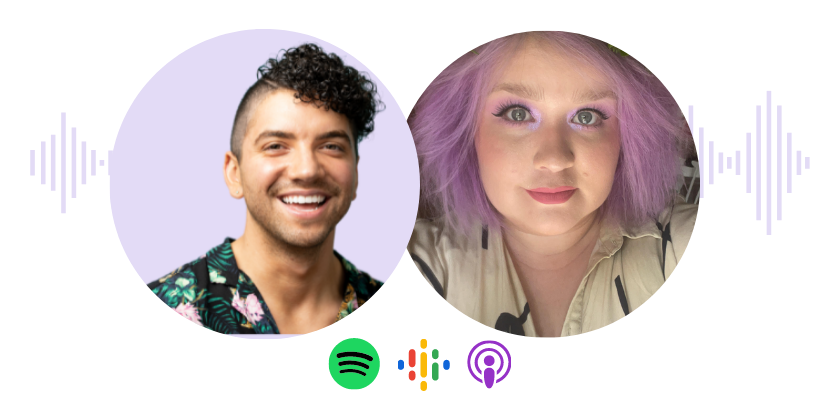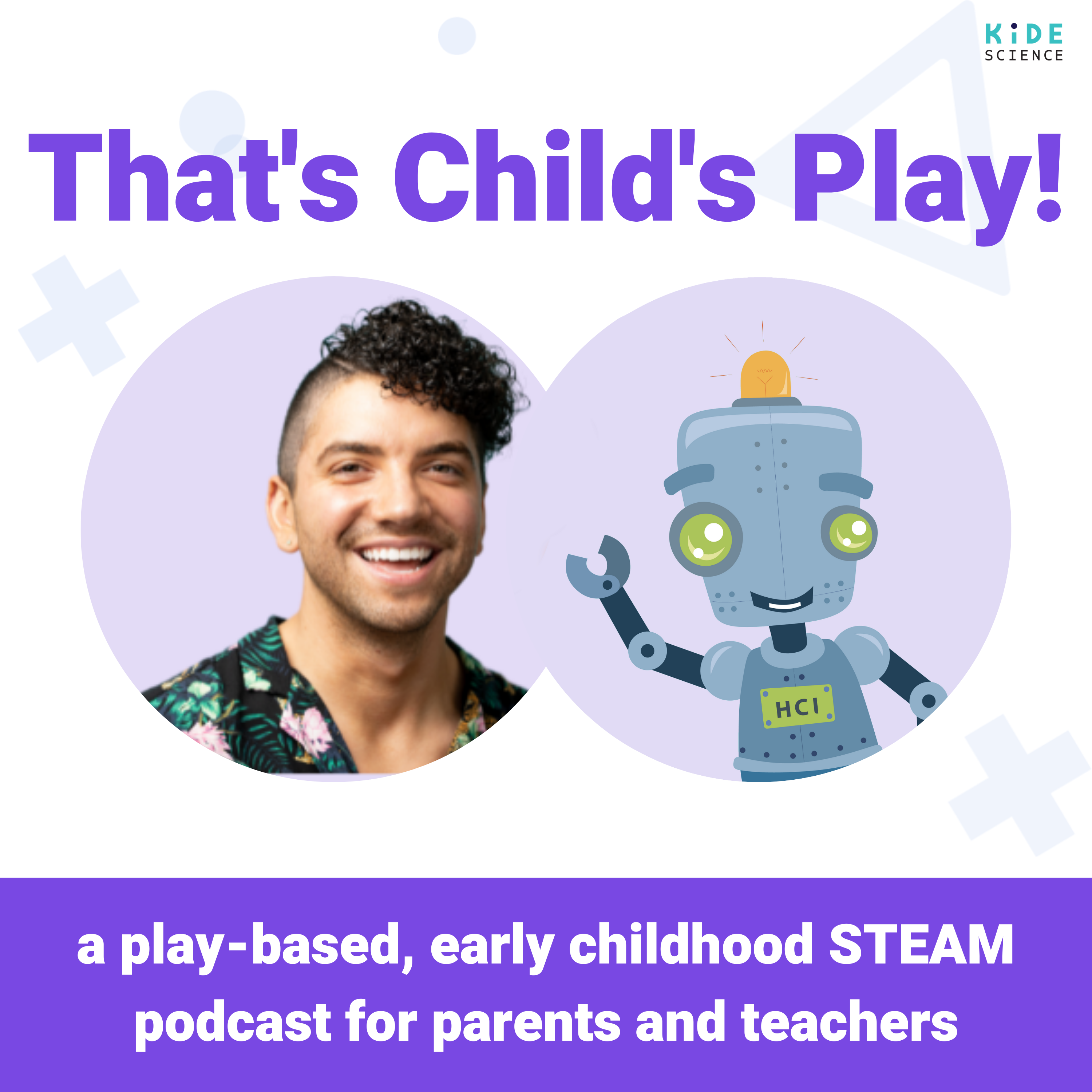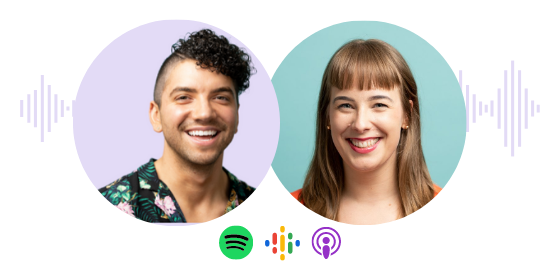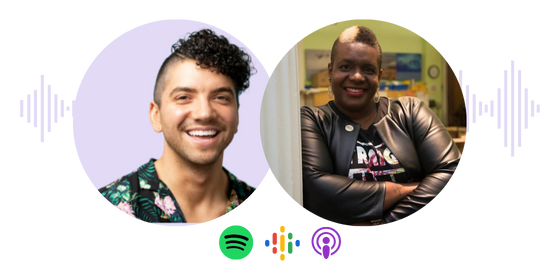Play-Based Learning is Accessible - with Elsa, Helsinki City Teacher
A real Helsinki City teacher sits down to talk about how play-based learning has impacted her teaching style


That's Child's Play!
This post was published to accompany an episode of Kide Science’s podcast, “That’s Child’s Play!” To hear more from Elsa, a Helsinki City Teacher, listen to the podcast directly on this page or wherever you listen to your podcasts.
Play-Based Learning is Accessible - with Elsa, Helsinki City Teacher
Play-based learning is a style of learning that is accessible for children with different barriers. In this episode, an early-years teacher in Helsinki City schools talks about her real-world experience using play-based pedagogy in practice.
The Transcript can be found below
Generated by AI, so please be gentle!
Antonio Santiago: Education, the great equalizer and the one thing on this earth that nobody can take from you no matter what. So let's make it accessible for everybody. Right? Right. Hi, you're listening to That's Child's Play! brought to you by Kide Science. I'm your host, Antonio Santiago. In today's episode, we are talking about how play-based learning can create a positive impact on students with learning disabilities.
And we're joined by a Helsinki city teacher. So without further ado, let's get into it.
Heads up in this episode, we are doing something a little bit different. Kide Science has teamed up with the city of Helsinki to provide story and play-based lessons to every kindergarten in the city Both Kide Science and the city of Helsinki are pretty proud of this collaboration.
So we've decided to dedicate this episode to discussing it
finland has one of the best education systems in the world by most measurements. A big reason for Finland success is its investment in early childhood education. Go ahead. Ask any immigrant in Finland raising children here. You'll be hard pressed to find someone who isn't gushing about the education system
Elsa: I'm Elsa, I became a teacher. my mother is also a teacher, so I think it runs in the blood somehow, I work for Helsinki city and I teach 21 kids group, this area has. many special needs children.
Antonio Santiago: To be clear, Elsa works for Helsinki city and to give the full picture of how we got connected for the show. Elsa works for a school that uses Kide Science in their curriculum.
Though she is not a dedicated, special education teacher. Her classroom has students with learning disabilities. And therefore also has a teacher paired with her who is certified to work with special education children. Some of these children are on the autism spectrum and Elsa said, there's a range of extra learning barriers for children like handling their emotions, meltdowns signs of aggression, and an inability to keep focus for long
Elsa: I really enjoy working with them because it's a challenge every time to see what the kid is like and how to work with him or her, and what is the best way to teach them.
Antonio Santiago: Do you have children in your classroom with particularly severe barriers to learning?
Elsa: Right now we have three kids with like the official, infinity, which is like a very strong support, very strong, special support. We have three kids with that and we make plans for them to study like differently because they have to and then we have this, the hosted.
Which means that we are helping the kids to study along the other kids. Right now, three of them. So we have six special needs children in total. And some of them go with the big group and some of them go by their own needs and but the plan and the goal is to get everyone t o feel part of the group and so that we will make the tasks so that the kids who have no special needs and do very well that they can have something to learn. And also that the kids who need the special support, then they get it. But also stay can feel that they are learning and are good and can stay with the group.
Antonio Santiago: Let's go through a typical day of class at your school. Is it really so like we hear all the time that you're spending the entire day outside. I feel like that's a pretty strong stereotype.
Elsa: So in Finland in preschool, I think that the typical day is that. It's not so much of sitting down and just trying to write and everything. Instead every day, we have a different plan basically for example, on Mondays we have gym time. So then we are trying to have the gym time as a whole group so that everyone can take part, and that has been great.
And then on Tuesdays, we can write down for a small moment and. Practice some letters or do some math or something else. And then on Wednesdays we usually have the Kide Science and then it depends on the day but it's not much sitting down rather. We like to do stuff with our hands and play and learn through that
we are learning English also in the preschool. How we learn the English is through songs, through play. We have had these different colored mushrooms
Antonio Santiago: To all of our international listeners, there is 1000% a theme here on this podcast with fins and mushrooms. If you've heard any past episode, you know exactly what I'm talking about, moving on.
Elsa: That we are playing with and they have learned all the colors also in English with those mushrooms. And in two weeks, that's one example. It's more fun. Yeah. It's more fun. That way that we. Having some games and playing, then that they have to sit down and I will just tell them which colors, which I just made mushrooms and they love them. we have this one, u h, Kid who is on the autism spectrum as well, in the - in the group. And we had this back where the mushrooms were and he came so attached to the mushrooms that when the other teacher from another group came to borrow the mushrooms and took the bag and he saw it and I came to work like later, he was crying to me that someone took our mushrooms and he was like very upset about that.
Antonio Santiago: This anecdote about the child, getting an emotional connection to the mushrooms is a great example of the importance and significance of the imagination to children. As previously mentioned, Elsa works at a school that incorporates Kide Science lessons into their classes. Kide Science is a play and story based program that revolves around a robot. This robot's name is Hoseli who comes into a variety of problems. Seriously, the dude is always in trouble. Hoseli is physically in Kide Science classrooms.
There are 3d printed or paper models of him. He communicates to the students by quote unquote, sending them a letter that a teacher prints out beforehand, and he uses a remote controlled light bulb . According to Elsa, her students really became emotionally invested in Hoseli
Elsa: we had a problem with the Kide Science robot that we have the actual robot that the kids are very much enjoying. It didn't work. And I had to get like a repair piece and I told the kids that the robot is sick and they were so sad for it, but we have been doing like different things. And now that the robot is okay again, they were so happy yesterday when we did the Kide Science again.
Antonio Santiago: So can you tell me a little about what a Kide science lesson looks like in a class like.yours?
Elsa: So I'm planning who can be with who and who helps each other focus, and then after that I will check what we have from Hoseli. So I will print out the Kide Science part that we are on and then check what we need to have.
Like what stuff like yesterday we had the balloon and baking soda, and. Stuff like that. So I went and get it from the kitchen lady who is not happy with me because I need always the strangest things, but she gave them to me. And then we have this room, which is actually dedicated to art.
Usually we have the Hoseli there, because it's so small that it makes the kids feel like, it's easy to work with a small group in a small room when there's like walls next to them, so that they feel focused and it's somehow like intimate space for the whole teaching lesson.
And then I get the room ready. And then we go th-there. We also have this I have to tell you, we have this researcher jacket which are actually like old. Shirts from men. So white, old shirts and I, we asked the fathers to bring them and then we also got these scientist glasses that we put on.
So when we go to have our lesson, we always put those on and the glasses on, and then they are researchers. They are not the children anymore. They are very serious and sophisticated.
And they are more focused and they are like they get into the role. So they are like, they're so cute, but they're very focused.
Antonio Santiago: When Elsa was sharing this, I was uncontrollably giggling at the thought of a bunch of kids and their dad's old shirts. I mean, research jackets and they're little goggles on eagerly awaiting a science lesson.
Elsa: At least we try to make it so that everyone has their own standard of learning basically, or their own level. And we try to challenge the ones that are like very well advanced. And then for the ones that need the extra support, there will be an adult helping them so that they can have also the feeling that they can manage and they can learn.
I think that they are enjoying it way more than the regular preschool tasks, because they really made a connection with the Hoseli robot, they really want to see him and talk to him. We always discuss things with the robot beforehand so that they can tell what they have been doing.
And they have time to talk to the robot. And then the robot has sent us the letter and I will read it. So we will get into the whole mood. And I think that they actually really enjoy it, like yesterday, the balloon. The one on the autism spectrum he was like, his whole face was like, just laid up when the balloon really came full of air and he didn't believe it.
He thought it was magic. And the phase of him was like, it was priceless. He was so happy. So I think that they can also enjoy, and I think that they enjoy it just because of the play aspect of it like that they know the robot, and they like it. They want to do stuff because of the robot.
Not because of me.
Antonio Santiago: I think your classroom and teaching situation is particularly unique. So I'm interested in hearing from you, why you think playing is so essential to learning for these children.
Elsa: I think that the playing for kids this age, like for a six year olds is essential because they are still very young. And like the. Normal way. Like the nature's way for them to learn is by playing different things.
And I think that is what interests them. And I think that through the, that interest, they can learn better. So they feel that they are enjoying the thing that we are doing, for example, the Kide Science or anything else, and when they are enjoying and they are In the mood space, it's easier for them to learn than just by telling what to do or like just reading or it's just my view of things that, that's what is needed when the children are so young. We expect from especially the special needs children. We cannot expect them to sit still and listen, when it is hard enough for them to sit still for five minutes sitting still for an whole hour is impossible and learning through play.
It's not sitting still. It can be like going out to the forest, and playing different animals or it can be. Kide Science, or it can be different. So multiple different things that, don't have to require the standing still. Of course, there's like a moment that you need to also learn that for the school.
But I don't think that six year old is major if enough, to do that.
Antonio Santiago: And do you have an instance or a situation where you were doing a play-based lesson with a child, maybe with serious learning barriers and you were thinking in your head, oh yes, this is like a miracle.
Elsa: Yeah, I actually had this truly an ADHD kid. So focusing was very hard. He couldn't sit still more than truly five seconds. Whenever we did anything, he was like very smart, no problems in learning basically. But the problem was that he cannot sit still, and the same problem goes on in school.
I've heard but- but he's the, like, happiest and kindest kid of all but he just cannot sit still. But for Hoseli, Hoseli was somehow. Very Very important to him. He enjoyed the fact that he could tell the Hoseli that what he was feeling at first, and then when Hoseli's turn came, he understood that he needed to listen to him and do the things to help him.
Like we have this thing that we are helping him each time that we do the tasks. So I think that because of the emotional connection, somehow he wanted t o do better. He wanted to focus, a nd he could sit still for a half an hour, which was quite long for him and very special. And I think that happened like every time we did Kide Science, so it wasn't just a one time thing.
That was the thing that he could focus on. And that was also the thing that he got very good feedback from we were very supportive of him. He was so happy doing it. And we were like, oh my God, you were so good. And you did such a good job so that he could feel like he's being very good student at the time.
Antonio Santiago: So it was an emotional experience.for them
Elsa: Yeah, I think so, last year when we had our spring party we needed to say goodbye to Hoseli because it was also a big part of our, preschool year, the Hoseli part. And we took a picture together with the robot. And it was very important to them to say by, and for me that was a little bit like emotional because they had such a good contact with something that isn't even real, but they believed it was.
So it was like magical to see that it was so important.
Antonio Santiago: Magical. I love that you use that word because it's kind of in our DNA, in everything that we do here at Kide, so it's nice to hear that it's working. Is planning something like a Kide Science lesson or other play-based lessons, something that takes a lot of time for you.
Elsa: This group takes a lot of time. I cannot be planning a lot because I have to stay with the group because we have challenging uh, stuff going on around and the kids need you there. You cannot be somewhere around planning for something for maybe next week.
I am basically at the group most of the time when I can. And Kide Science is pretty easy for me to plan because they have the setup already. Basically I need to pick things up and make up the room and get my own head into the mindset of doing the Kide Science. But I enjoy it.
Actually. I enjoy it very much because of. Playful aspect of it. And I enjoy the children asking questions I also enjoy getting into that role myself. So I think I like it, but also the planning is easy and fast. So that's an aspect I like it as well.
Yesterday when there was a full group we did the balloon exercise and the kids had their own safety glasses on and they were sure that the balloon was going to explode. And they were very concerned for me because I didn't have the glasses on because there are only 10 of them. And they were like, you have to get back, you have to get back.
It can explode. And they were really feeling the thing. And I knew. It won't explode but then I had to be like, okay, I will get back. Maybe you guys can take this so that they can be as excited as they can.
Antonio Santiago: It's interesting that you say excited it's it's so pure a child's excitement. Sometimes it can get a little chaotic.though. With, you know, a bunch of kids kind of pumped up about a fun thing that they're doing. Do you find that it gets rowdy?
Elsa: No, I don't think so. I think that we work in a smaller groups. Like every time we do play based learning as well. I don't know if it's different, if there would be like 30 kids around, but basically with those, we can control them.
And also, I don't feel like it's gonna, it depends on the play, what you are doing, I think, but I think that play based learning, isn't a reason to get rowdy and crazy. It's a way to l earn, but you can also calm them down, it doesn't have to get out of hand basically.
Antonio Santiago: earlier, you mentioned a child in your class who is non-verbal. Is he able to do the science lessons effectively?
Elsa: He has participated in the easy ones. The easy ones have been great because he understands something.
And I think that he also enjoyed it, although he couldn't verbally tell Hoseli anything but he also likes to play and laugh and have like things very much like fun. And I think that he found the Hoseli the robot that is flashing the lights. he found it pretty hilarious.
So I think he enjoyed it as well.
. Like yesterday, the kid who is also on the autism spectrum . He told me that it was the best escari day ever.
Antonio Santiago: Escari is the Finnish word for what many of us call kindergarten
Elsa: and he told me that I had to write down after the lesson, the ingredients that we did the stuff with. So he can do it at home and show his little sister who is actually eight months old. So I don't think that showing her is going to happen but yeah he asked me to wrote down the things that he can do it at home as well. So I think that went great.
Antonio Santiago: Can you talk a little bit about how Kide Science, even got to to a Helsinki public school.?
Elsa: We were actually one of the first groups that got Kide Science in Helsinki City because we are an innovative kindergarten. So we had all these new stuff coming at us first. Basically we are testing everything beforehand and we were the first ones in Helsinki. And then we have been doing it for Almost two years now.
And we got this because we were the first groups, we also got the whole salary from them and then they teach us how to use like the website and everything.
Antonio Santiago: And folks before Kide Science publishes any lessons, we actually co-create them with the teachers in a Helsinki city daycare. So every lesson is tested with real little ones and real public schools. Elsa. I imagine that you're probably seeing so many different programs and ideas to make education better.
What's been your favorite so far
Elsa: No, I think the Kide is actually my favorite, but yeah. We were the first ones to have the big screens in our kindergarten, in every group and touch screens so that we can do stuff with them as well. And then we have iPads and everything. And we have we had this Lukoluma I think we were the first ones to have it, which is like an application that you can read different stories on.
And that's also very great. But I think that Kide Science is still my favorite. . Because it's so cool to do the Science things with the kids so that they are getting excited to do the science, I think that is the whole point of Kide Science so that they can feel that they are doing the research and they can figure out different things and they can think themselves how.
Things happen. So I think that is great, and I think that has affected many of the children that are going to the school.
Antonio Santiago: and in the tradition of asking everybody who comes on to this show, what is something that a student has said or done that has left you shocked or speechless or pondering the meaning of life?
Elsa: I wrote down that the last year the students who couldn't stay still told me that Hoseli is so nice because he likes to listen to him more than me. So that's why the lessons are so fun because it isn't me talking, although it is, but it's Hoseli.
Last year, actually, when we got to the weather things like. The part where there are like different weather experiments and everything. We had this kid who was also on the spectrum, he was very like talented and very interested in Science and everything. He asked me questions so hard that I had no answers to him.
They were about like space and how long it would take from us to fly to the space if we had a rocket and it was. They were so hard, the questions. And I was like, shocked that, I'm sorry, but I can't answer to you because I don't know to answer that the answer, but we can still search for. for the answers from the internet,
Antonio Santiago: I'd like to thank Elsa and Helsinki city managers so much for allowing us to have this episode. It was such a great pleasure to hear examples of play-based learning in action. Well, that's it for this week's episode. If you liked what you heard, please like follow or leave us a review on apple podcasts or wherever you get your podcast.
If you're interested in a free trial of Kide Science, just go to Kide Science dot com. We also have a Facebook community with many different resources, a blog, and just so many other good, and free play based learning activities. All of this can be found in the show notes. All right. Well, thank you so much for listening to that's.
Child's play. See you next time.
Related articles
Cofounder Aino Kuronen joins to talk about her journey as a non-Scientist teaching science in...
In this episode, we're joined by Leigh Austin, the Director of Exceptional Learning in Orange...
'That's Child's Play' is back, and we're live at the NAEYC conference in Washington, DC! This...

.png)
